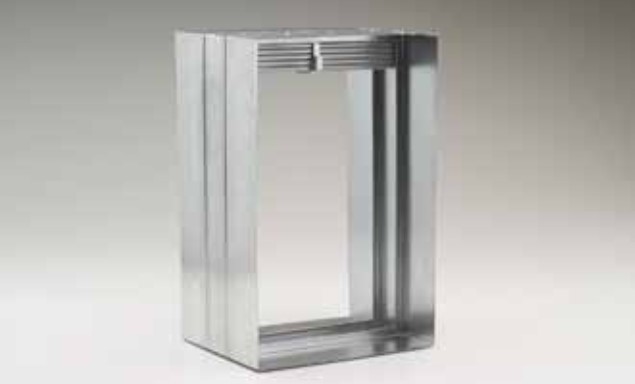AMCA’s collection of technical tips and guidance for commissioning and periodic performance testing
Active dynamic fire protection includes the design of all systems to extinguish or extinguish the fire. This process is done in parallel with the evacuation of residents. This process includes smoke detectors, building pressure design, fire alarms, sprinklers, emergency exit signs, and building evacuation plans. However, a dynamic fire protection system does not prevent the spread of smoke and toxic gases (the leading cause of fire death). Passive fire protection is designed to prevent the spread of smoke, toxic gases and fire through fire isolation equipment.
Passive fire protection system:
• Increasing the effectiveness of dynamic systems
• Facilitating the evacuation of residents
• Protective feature
• Minimization of damage characteristics
Separation of areas of a building with fire-resistant separators such as fire walls, fire barriers, fire partitions, smoke barriers, smoke partitions is one of the critical features of the system.
While penetration into these walls or partitions is done by HVAC system ducts, the continuity of the system in fire resistance is established by fire dampers, smoke dampers, or combined smoke and fire dampers in these ducts. These three types of dampers are installed and operated with different functions. Knowing the differences between these dampers is necessary to use them in the right place and also to maintain the safety of buildings.
The fire damper closes when the temperature inside the duct reaches a certain limit. The smoke damper closes when smoke is detected by the sensors. According to the revision regarding the design of extinguishing and fire alarm systems, most engineers agree that the use of combined smoke and fire dampers is the best way to isolate the environment during a fire. These dampers not only close when the duct temperature rises, but also block the path when smoke is detected. Combined smoke and fire dampers can also act to control the pressure of different spaces. The main difference between these dampers and fire dampers is that, for this type of dampers, the UL leakage standard is proposed to control and stop the emission of smoke. This standard only applies to combined smoke and fire dampers and fire dampers.
Fire Damper
Anti-fire damper or fire damper is a device that is installed between air transmission channels or smoke control systems to close in the event of heat detection. Also, the anti-fire damper helps to stop the flow of air into the fire zone, prevent the transfer of flames, and also separate the fire zones in a building. The primary function of a fire damper is to prevent the flame from spreading from one area to another.
The fire damper (Figure 1) is operated by a thermal fuse, which is a metal with a low melting temperature. These types of dampers are tested under UL555 (Safety Standard for Fire Dampers) to maintain separation of fire zones. These fire dampers are equipped with a thermal fuse (operating at 165-286°F), and the vanes are normally open until the fuse blows and the vanes close. If the damper is exposed to this temperature (the melting point of the fuse), the damper will operate and the vanes will close to prevent the flame from spreading to the surrounding environment.
 A type of fire damper with a shutter vane equipped with a thermal fuse and a sleeve
A type of fire damper with a shutter vane equipped with a thermal fuse and a sleeve
place of use
Fire dampers are usually installed inside the walls or adjacent to the wall or ceiling to prevent the flame from spreading to the adjacent areas (through the air channel) during a fire. A fire damper is also known as a part of a wall or system.
Fire dampers are made in two types of shutter blades and multi-blades. The most common type of fire dampers in the world are shutter type, but in Iran, most of the fire dampers, such as volume control dampers, are of multi-blade type. Multi-vane fire dampers usually provide more restriction to air flow than shutter vanes for the same duct size. Multi-blade fire dampers are tested under the UL555 standard.
